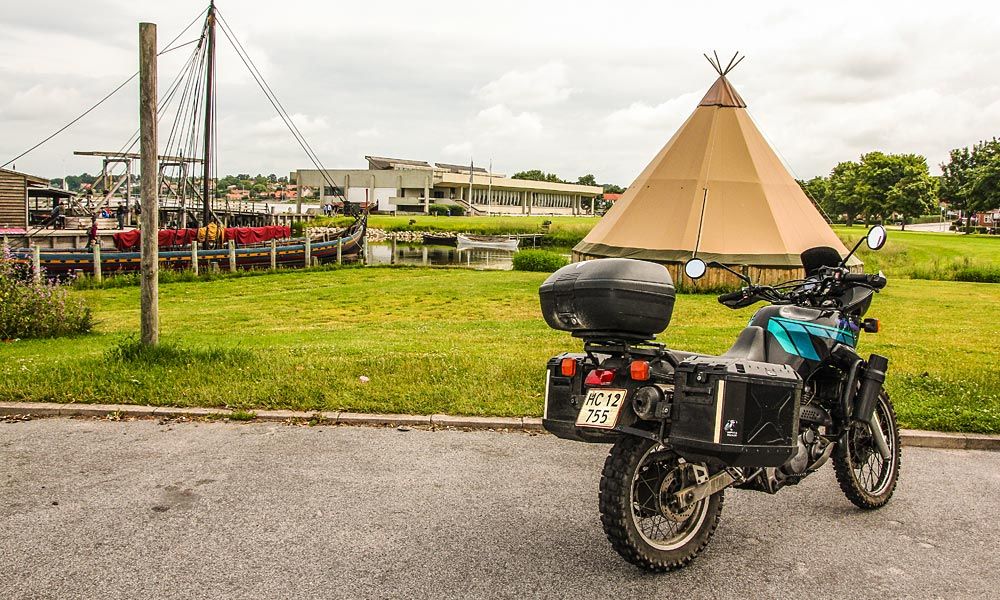ETR // Stage 58 // Granada - Ronda
-
37°10'27.4"N 3°35'04.2"W
-
37.174267, -3.584503
-
Granada - Ronda
Distance
-
Granada - Ronda
-
Radius 100 km
-
275 km
Highlights
-
The Alhambra, Granada
-
El Albaicín, Granada
-
Córdoba
-
Løja, Iznájar, Antequera
-
La Celada, El Higueral, Solerche
-
El Torcal Limestone
-
Antequera Dolmens Site
-
Ronda la Vieja


El Albaicín - the medieval district to the north
After you have explored The Alhambra on foot, and taken in the many layers of culture and history, you should treat yourself to an day/morning/evening of walking around El Albaicín, an interesting Moorish village perched on the next hilltop, just north of The Alhambra. Also a UNESCO World Heritage Site, you could spend a few hours walking around this beautiful village, which dates back to the 11th century.
You can ride up to El Albacín by motorbike, park it outside the village and continue on foot, or find a parking space near some of the restaurants, within the village walls. While you're there, you should visit the church of San Salvador, which is built on the remains of a Moorish mosque, as well as Granada's archeological museum.
Take in the spectacular view of The Alhambra from the southern wall of the village, which is particularly good from the viewing point at the Mirador de San Nicolás.



Ride north, west or south?
Out on the road again, and you have a few decisions to make - should you stick to the main ETR backbone north through Priego de Cordoba and take a run up to Córdoba and explore that beautiful city this evening? Or should you lose yourself in Andalucía, with a ride inland through the hills and visit the smaller towns of Løja, Iznájar, Antequera and others? Or maybe do one large loop and take them all?
Loja, formerly Loxa, is situated at the western limit of the province of Granada, surrounded by the Sierra de Loja, of which the highest peak, Sierra Gorda, stands 1,671 metres above sea-level. That's one reason.
Another deciding factor could be Iznájar - a classic "pueblo blanco", or white village, surrounded by its 'Aldeas' - sub villages including La Celada, El Higueral, Solerche to name some. The village itself is situated on top of a huge rocky outcropping overlooking the Embalse de Iznájar, the largest reservoir in the whole of Andalucía, which is frequented throughout the warm season as a beach.
A third reason is Antequera, known as "the heart of Andalusia" (el corazón de Andalucía). The nearby natural reserve of El Torcal, famous for its unstable limestone rocks, forms one of the most important karst landscapes in Europe, and the Antequera Dolmens Site is a UNESCO World Heritage site. Hmmmmmm...



Ronda and Ronda la Vieja
Ride through Parque Natural Sierras Subbéticas for some great roads and views, then head south to Ronda. Situated about 750m above sea level in a very mountainous area, The GuadalevÌn River runs through the city, dividing it in two and carving out the steep, 100-meter deep El Tajo Canyon, upon which the city lies. Both Ernest Hemingway and Orson Welles spent many summers in Ronda as part-time residents of the old town quarter, La Ciudad.
Ronda was first settled by the early Celts, who, in the 6th century BC. Phoenician settlers later established themselves nearby, to found Acinipo, known locally as Ronda la Vieja, or Old Ronda. The current Ronda, however, is of Roman origins. Spectacular!


Neanderthals, Celts, Phoenicians, Romans, Berbers
Ronda was first settled by the early Celts in the 6th century BC, before Phoenician settlers later established themselves nearby, to found Acinipo, known locally as Ronda la Vieja, or Old Ronda. The current Ronda, however, is of Roman origins. Spectacular!
Around the city are remains of prehistoric settlements dating to the Neolithic Age, including the rock paintings of Cueva de la Pileta.
Ronda received the title of city at the time of Julius Caesar. In the fifth century AD, Ronda was conquered by the Suebi, led by Rechila, being reconquered in the following century by the Eastern Roman Empire, under whose rule Acinipo was abandoned.
Later, the Visigoth king Leovigild captured the city, and Ronda was part of the Visigoth realm until 713, when it fell to the Berbers, who named it Hisn Ar-Rundah ('Castle of Rundah) and made it the capital of the Takurunna province.



The Three Bridges of Ronda
Three distinctive bridges span the canyon and the GuadalevÌn River and all three serve as some of the city's most impressive features: Puente Romano 'The Roman Bridge', also known as the Puente Arabe, or 'Arabic Bridge', Puente Viejo 'The Old Bridge', also known as the Puente San Miguel, and Puente Nuevo 'New Bridge'. Commenced in 1751 and took until 1793 to complete, Puente Nuevo is the tallest of the bridges, towering 120m above the canyon floor. The former town hall, which stands next to the Puente Nuevo, is the site of a Parador Hotel and has a great view of the Tajo canyon.
Plaza del Socorro
Plaza del Socorro is the modern political centre of Ronda. It was here that Blas Infante showed the Andalusian flag and coat of arms for the first time in 1918. The parish church of Socorro (Parroquia de Nuestra Señora del Socorro) was built in 1956, and the Circulo de Artistas (Artists' Society) is located on the north side of Ronda's Plaza del Socorro.
Serranía de Ronda mountain range
Serranía de Ronda is filled with charming pueblos blancos which are approachable by motorcycle, and the position of the town of Ronda provides a stunning view over the mountains of Serranía de Ronda.







































































































